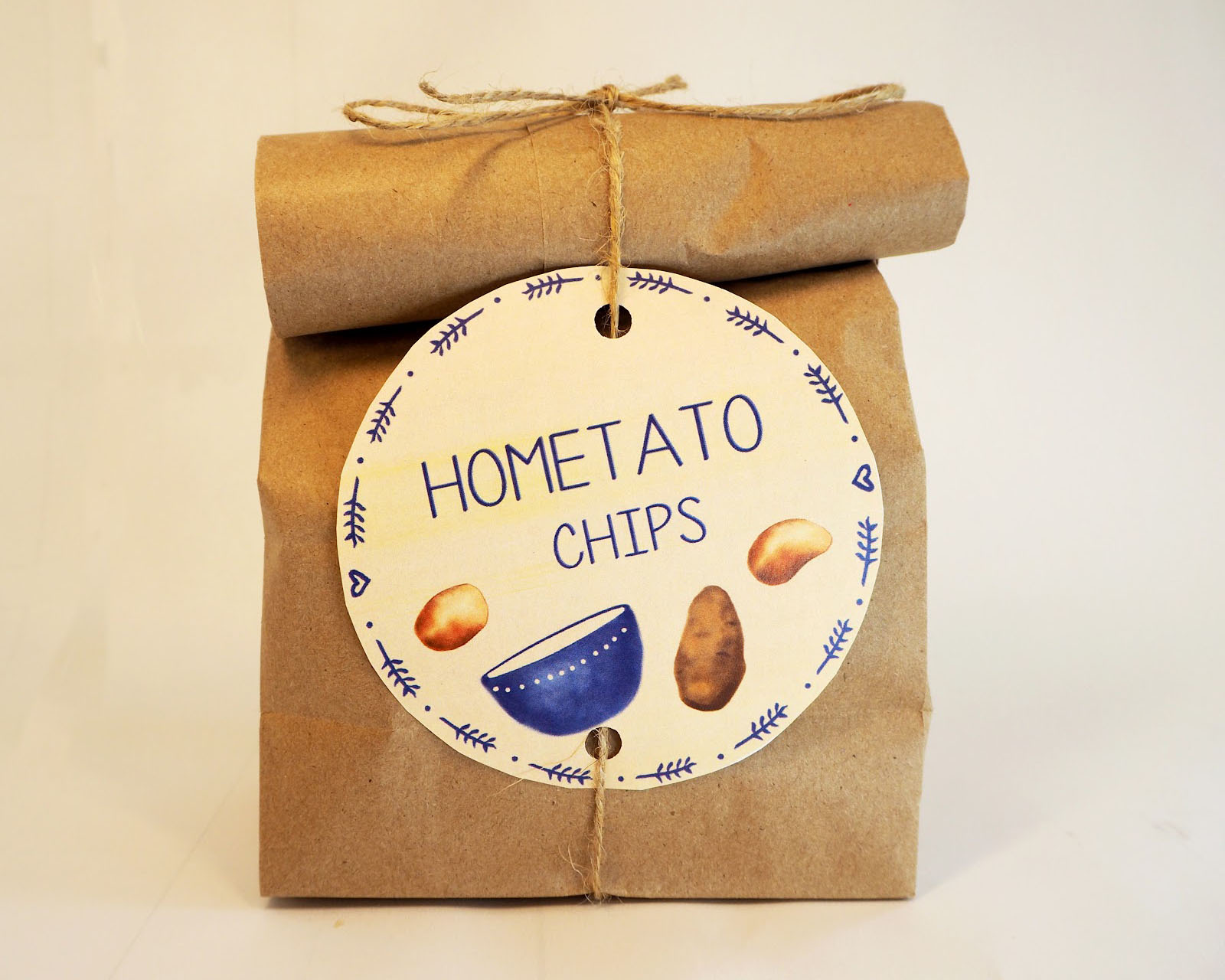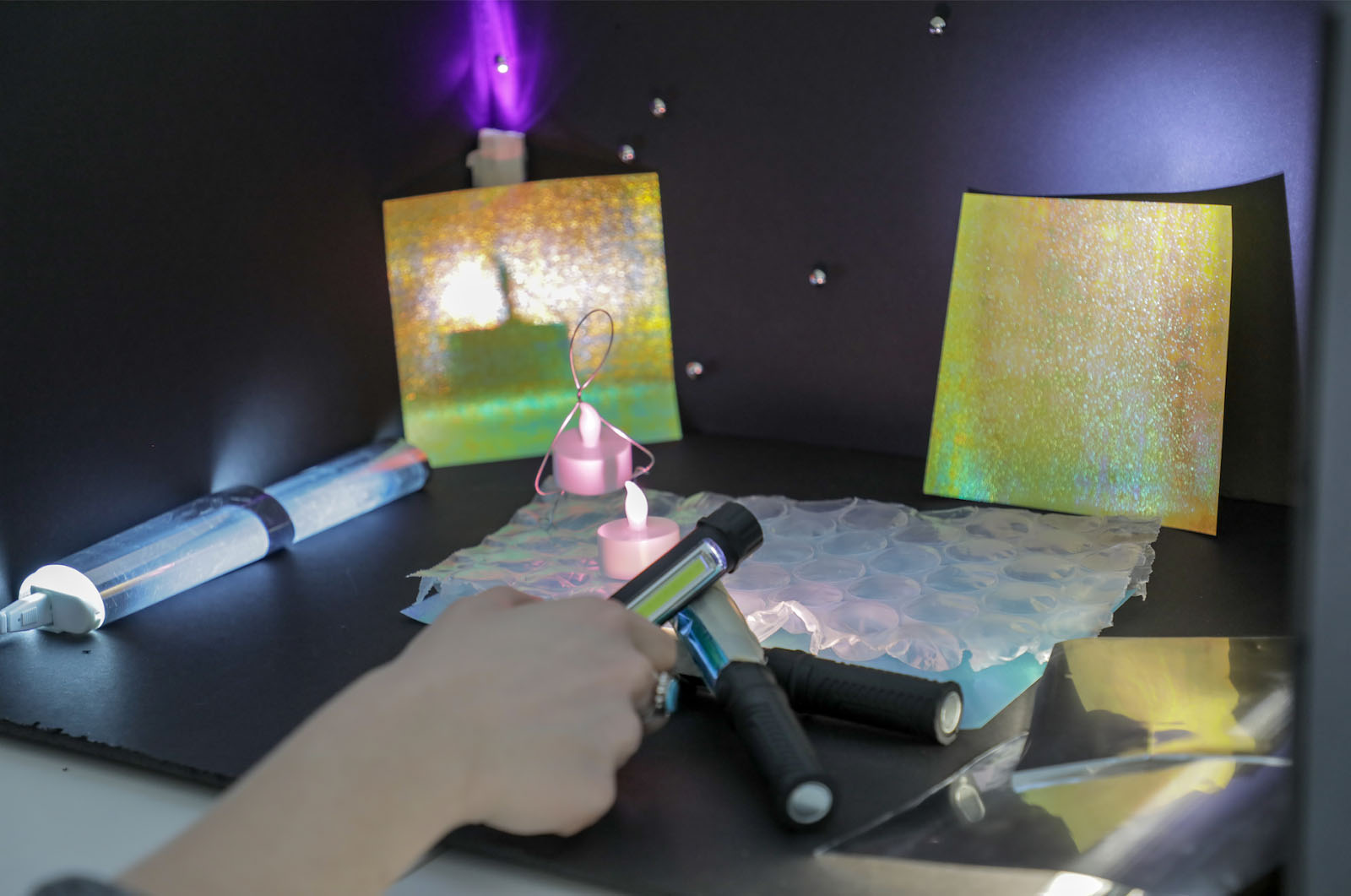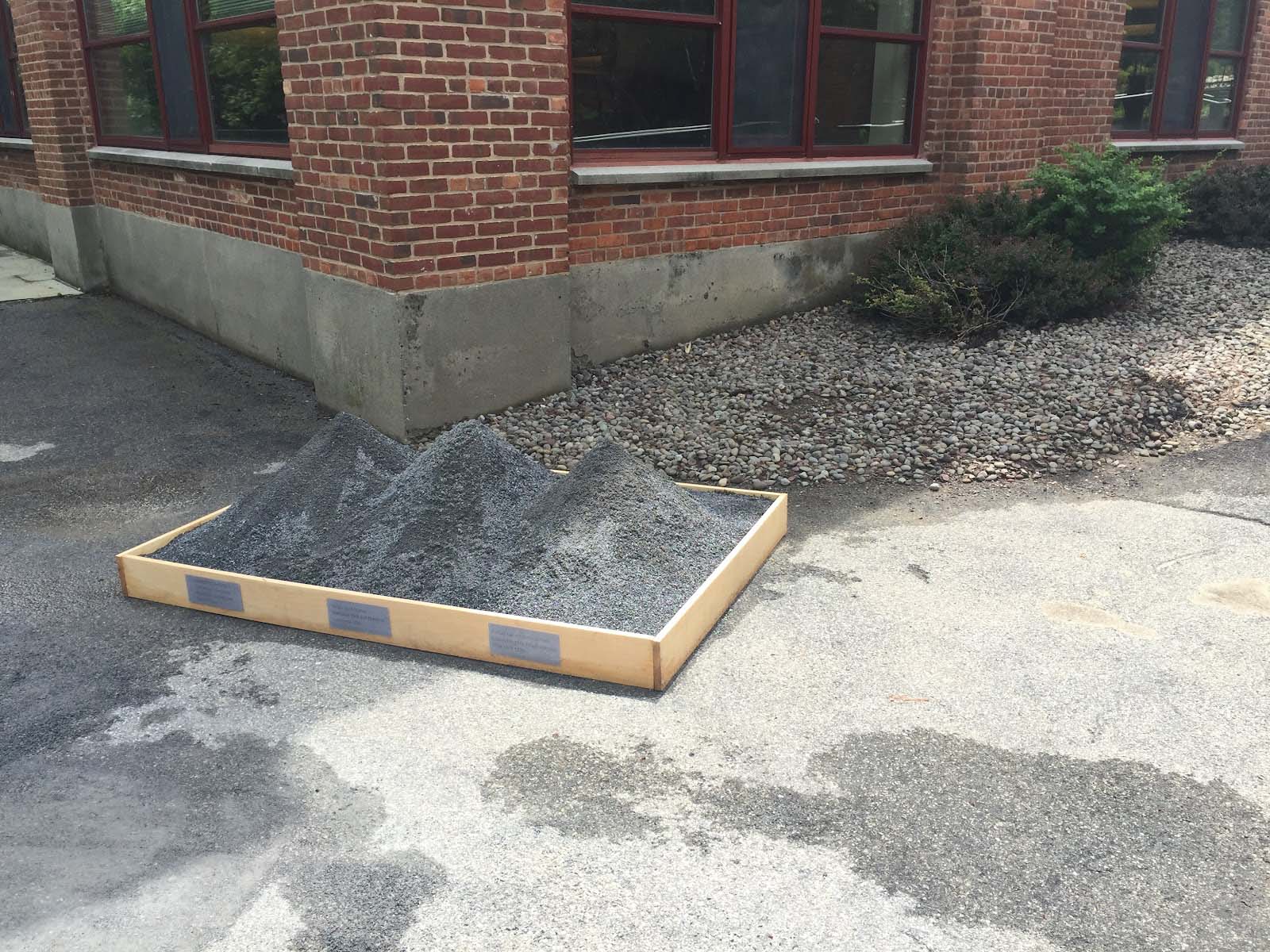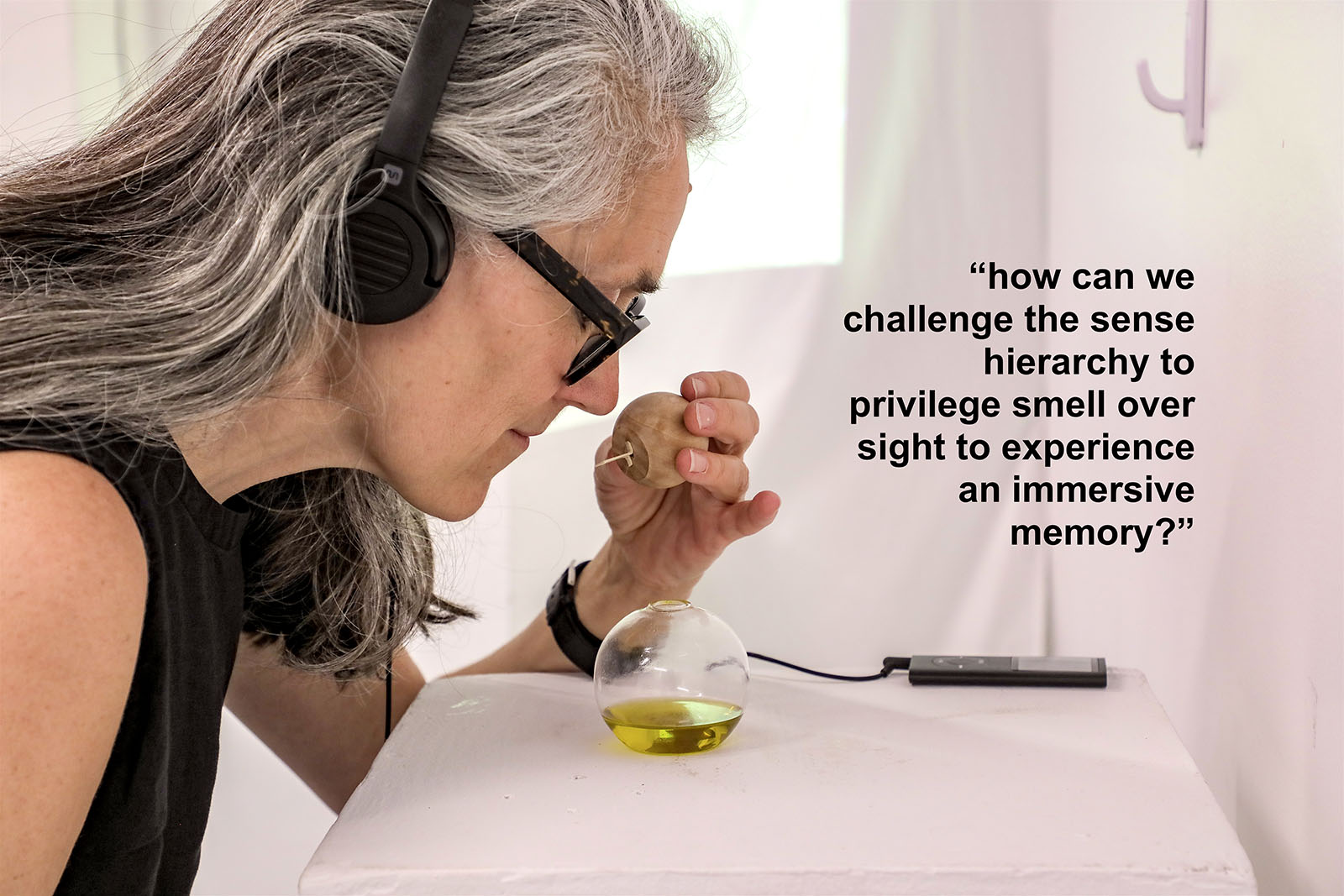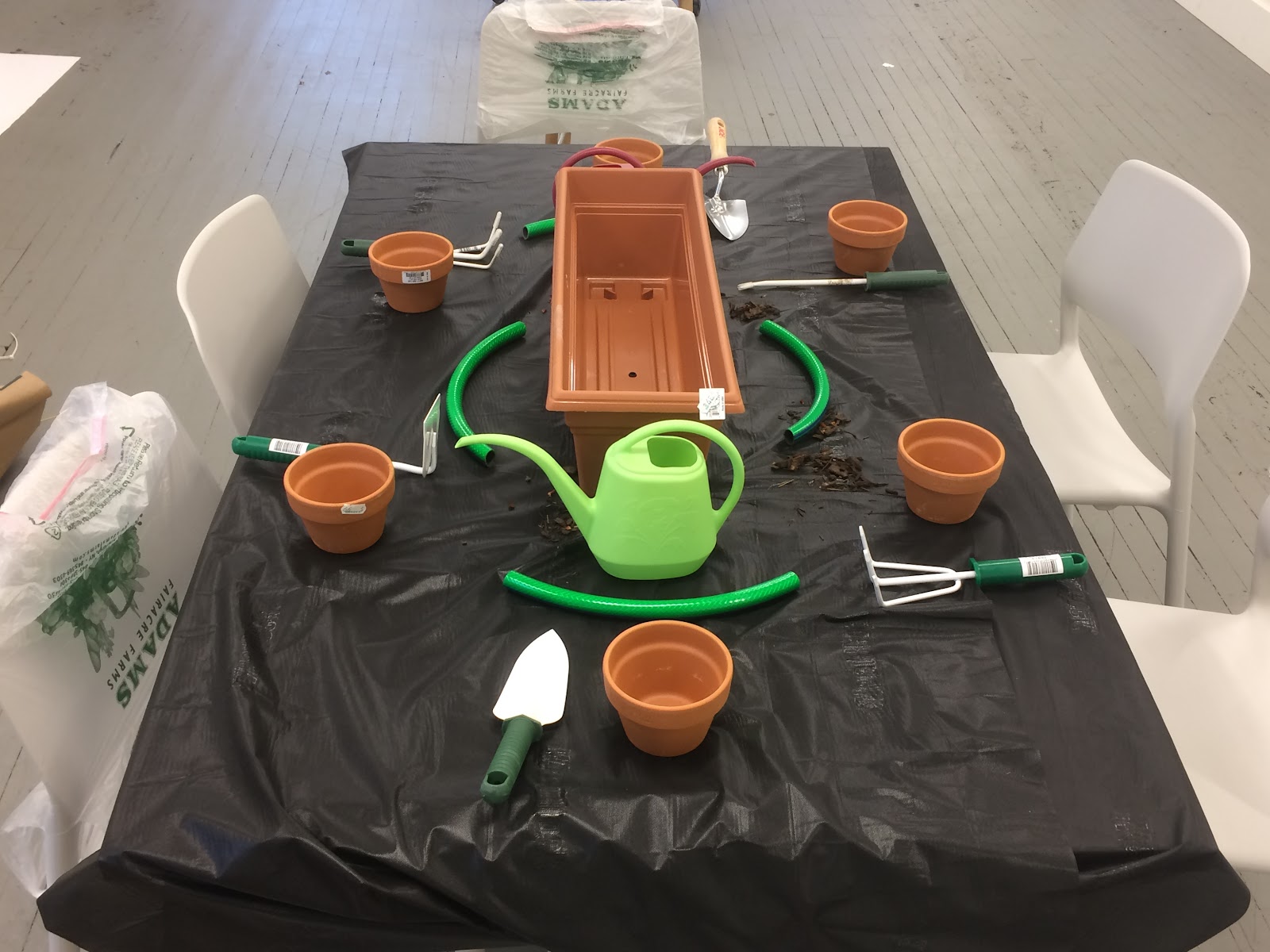Summer 2018–19: Design and the Senses
This exploratory, open-ended iteration of CAAD’s summer grant saw faculty and students workshopping ideas together. They dove into sensory experiences and interacted with outside exhibitions and institutions to inform their personal areas of interest. Using frameworks from speculative design methods and critical disability studies, participants asked tough questions with an eye toward expanded possibilities, rather than finished results. Students gave form to inquiry with a series of prototypes that may be remounted and developed further in the future.
Student Researchers 2018: Isa Pengskul ’19, Lily Berman ’19, Saskia Globig ’19, Sophia Yoo ’19, Robert Appleby ’19
Student Researchers 2019: Sevine Clarey ’20, Elinor Quao ’20, Elliot Kleinman ’21, Logan White ’20, Maimuna Touray ’20, Olivia Guarnieri ’20
Design and the Senses: an interdisciplinary exploration in critical and speculative design as research. Five students were chosen to participate in a four-week program consisting of workshops, field study, and iterative design prompts. Below is a week-by-week overview of the program, written by student participant Saski Globig.
Week 1 | Design as Research, Research as Design
Students were introduced to various design thinking models and visualizations. They eased into the mode of speculative sensory imagining with “99-cent Futures” and “Thing from the Future” creation exercises led by Jonas Voigt. This first week unleashed the students to explore sensory concepts and experience with workshops from movement with touch and sound, to sight and illusion using projections and virtual reality; smell and the value of the proximal senses, to the structure and social potential of video games. The week concluded with the first version of “The Thing for Monday,” a variation on the futures imagining exercise that would come to structure the four weeks of the summer, prompting concrete projects and aiding the students in generating larger ideas.
“It was amazing to work with and learn from students and teachers with such diverse artistic and intellectual backgrounds. It meant that we were all experts and beginners at one time or another.” — Lily
Week 2 | Lenses & Dials
Mentors articulated this week’s theme as a two-sided approach to contextualizing students’ designs: the social, environmental, political, economic, and other structures through which a design arose and could be examined (the “lenses”), and the duration, scale, and other factors that could influence the aesthetic concerns and impact of the design in its speculated setting (the “dials”). Students participated in a movement theater workshop on the 9 Viewpoints as an introduction, then delved into sight, sound, and taste by making camera obscuras and podcasts and traveling to a restaurant in Rhinebeck. The students began to narrow the focus by designing their design questions, getting to the heart of what mattered to them. They played an altered version of “The Thing for Monday” that allowed for more control and choice in its scenarios.
“This is the point when the summer started to feel more ‘real.’ It went from something experiential and theoretical for just us, the participants, to speculation grounded in real-world impacts. I could imagine my designs reaching people outside Vassar.” — Saski
Week 3 | Out to Go In
Continuing to use the “double diamond” model of design thinking, program participants branched out from the classroom and from conversations up to this point, with the aim of returning to their projects with clearer objectives. Students used inspiration on visits to the Cooper Hewitt Smithsonian Design Museum and the Art OMI sculpture and architectural center to spark discovery of their projects’ core directions. They gathered materials for a “Thing for Tuesday,” an iteration of form one step closer to their last designs.
“Being introduced to research through design has helped me bring how I work creatively into my academics, and how I work academically into my creative projects.” — Lily
Week 4 | Focus on Form
After working independently to fabricate their prototypes and documentation of the process, with feedback from each other and from mentors, the students mounted an exhibition entitled “The Thing for June.” It included an open experiential gallery and presentations of the work. Afterward, students were given an opportunity to reflect on the summer as a whole and offer suggestions for changes to the program.
“CAAD taught me how to structure my creative process, and how to communicate my ideas while forming them so I can share them with collaborators.” — Lily
The five projects appeared in these forms on the last day:
Isa explored ideas of home through food to have an immediate positive effect on those who engage with her experience. Food is central in our lives and has a close connection with home—it can capture an aroma, a texture, a taste, and a visual from home. As participants flavored and packaged potato chips, Isa hoped they would bring their tastes to the table, be willing to experiment, and together create a shared final product equally representative of everyone’s homes.
Lily was looking for ways to unite performers and designers in the creative process of staging theater. She sought to analyze scripts valuing playful rigor that privileged the sensory over the intellectual, through image instead of only plot and character psychology. CAAD and Powerhouse participants tested Lily’s theater devising exercise, and she then presented it using model stages.
Saskia installed a public sandbox for people of all ages. The material inside is local gravel formed into three labeled mounds: the first moon landing location, Great Sand Dunes National Park, and an industrial site at the edge of Poughkeepsie. Saskia hoped that those who encountered the box—at Vassar or in any city—would begin to reconsider the people and stuff that go into building urban networks and American national mythologies.
Sophia challenged the sense hierarchy with a comparative scent installation. Pairing oils with sounds and projections, she invited visitors to name the smells, probing our associations and investigating what happens to proximal senses interacting with distant ones. The title of her project, “hyangsoo,” indicated the importance of personal smell memories as it draws on the Korean word with a double meaning: perfume and longing for home.
Robert set up “dig in!” seeking to explore rituals of food consumption. A table arranged with a meal to be eaten only with gardening tools and containers, the project asked diners to lean into defamiliarization and question their relationships to comfort and production. An accompanying soundscape provided a dialogue between internal and external forms of consumption, sparking a holistic outlook on our relationship with food processes.
